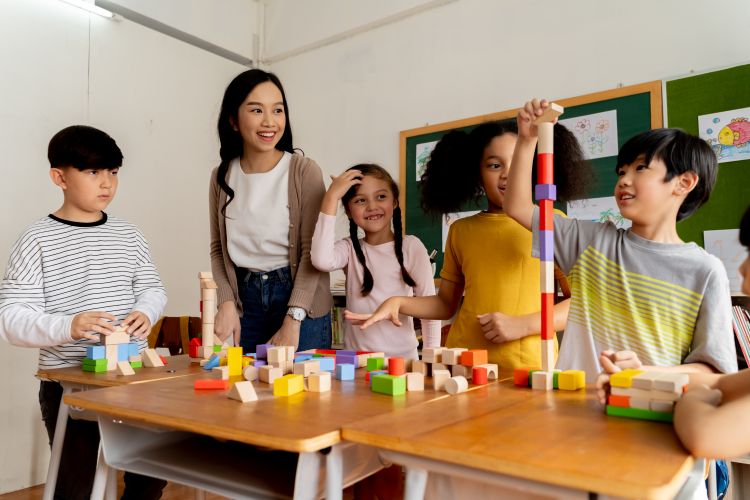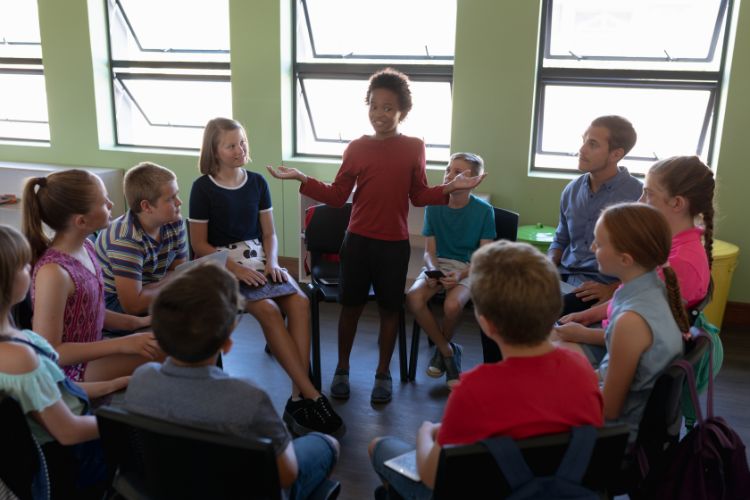Have you ever looked out at a sea of blank faces in your classroom? Students staring off into space, fidgeting, or whispering to their neighbors? It’s a disheartening sight for any teacher, and it signals a lack of student engagement. Helping students stay engaged is essential for learning. When students are focused, they’re better able to absorb information, think critically, and participate meaningfully.
So, what causes students to zone out? And more importantly, what can educators do to cultivate a classroom where students are focused and ready to learn?
Let’s explore this topic together! We’ll dive into factors that affect student attention and provide practical strategies to help your students stay engaged. Get ready for actionable tips, real-world examples, and a deeper understanding of how to transform your classroom into a focused learning space.
Before we can tackle the challenge of student focus, let’s understand what it is and the factors that influence it.
What is Focus?
Focus is the ability to concentrate on a specific task or stimulus while ignoring distractions. Think of it like a spotlight – it shines on what we want to pay attention to, blocking out the rest. There are different types of attention, including:
- Sustained Attention: Maintaining focus over a period of time (listening to a lesson)
- Selective Attention: Focusing on one thing while filtering out distractions (working on math problems while classmates talk)
Factors Affecting Student Attention
A multitude of things can derail student focus, including:
- Internal Factors: Tiredness, hunger, anxiety, lack of interest
- External Factors: Noisy classroom, uninspiring lessons, technology distractions
Helpful Hint:
Understanding why a student struggles to focus is key to finding the right solutions. Observe your students carefully to identify patterns in when and how their attention wavers.
The Power of a Well-Designed Lesson

Imagine a classroom buzzing with curiosity, where students are actively participating and eager to learn. This isn’t a fantasy – it’s the result of a well-designed lesson that captures student attention and ignites their interest.
Here are three key components to consider when crafting focus-friendly lessons:
Clarity and Relevance
Learning Objectives: Start by outlining clear learning objectives that students understand. What do you want them to know and be able to do by the end of the lesson?
Connecting the Dots: Help students see the relevance of the material to their lives. Can they apply what they’re learning to real-world situations?
A study by ASCD (Association for Supervision and Curriculum Development) found that students who understand the purpose behind learning are significantly more engaged [1].
Stats:
According to a study by ASCD, students who report a clear understanding of learning objectives demonstrate 20% higher engagement levels in classroom activities [1].
Variety and Pacing
- Mix it Up: Lectures are valuable, but relying solely on teacher talk can lead to mental fatigue. Incorporate a variety of activities like discussions, group work, hands-on projects, and technology integration to keep students actively involved.
- Pacing Matters: Just like a good song, a well-paced lesson has moments of intensity and moments of pause for reflection. Vary the pace of your instruction to prevent boredom and allow students time to process information.
Interactivity and Student Involvement
- Pose Questions: Don’t lecture to a passive audience! Ask thought-provoking questions throughout the lesson to encourage students to think critically and participate in discussions.
- Active Learning Strategies: Incorporate activities that get students moving, interacting, and collaborating. This could involve simulations, role-playing, debates, or group problem-solving tasks.
By prioritizing clarity, variety, and student involvement, you’ll create lessons that naturally hold student focus and promote deeper learning.
Building a Positive Learning Environment
A well-designed lesson is a crucial piece of the puzzle, but it’s not the only factor that influences student focus. The classroom environment itself plays a significant role in fostering engagement. Here’s how to cultivate a positive space where students feel supported and motivated to learn:
Classroom Culture and Relationships
- Positive and Respectful Environment: Establish clear expectations for behavior and create a classroom culture built on mutual respect. Students who feel safe and supported are more likely to be invested in their learning.
- Building Relationships: Take time to get to know your students and build positive relationships with them. When students feel they matter to their teacher, they’re more likely to be engaged in class.
Addressing Physical and Emotional Needs
The Power of Movement: Schedule short brain breaks throughout the lesson to allow students to move around and refocus their energy.
- Addressing Emotional Needs: Acknowledge and address student emotions that might be affecting their ability to focus. Some students might be struggling with personal issues at home, anxiety, or learning difficulties.
- Here’s a real-world example: Imagine a teacher notices a student frequently losing focus in the afternoon. After a conversation, the teacher discovers the student is hungry because they haven’t had lunch. The teacher can work with the student to find a solution, perhaps allowing them to have a healthy snack at their desk.
By creating a supportive learning environment that addresses students’ physical and emotional needs, you’re laying the groundwork for improved focus and engagement.
Targeted Strategies for Different Ages
While the core principles of fostering focus remain consistent, the specific strategies we use can vary depending on the age group. Let’s explore some targeted approaches for different grade levels:
Elementary School Strategies (K-5):

- Focus on Play and Exploration: Young students learn best through play and hands-on activities. Incorporate games, simulations, and manipulatives into your lessons to keep them engaged.
- Shorter Attention Spans: Elementary students have shorter attention spans, so keep your lessons concise and incorporate frequent breaks for movement and redirection.
- Positive Reinforcement: Celebrate effort and participation! Use a sticker chart system or other positive reinforcement strategies to acknowledge good focus and on-task behavior.
Middle School Strategies (6-8):
- Relevance and Choice: Middle schoolers crave relevance. Connect lessons to real-world applications and offer students some choice in their learning activities.
- Movement and Collaboration: Incorporate movement breaks and collaborative activities to cater to their growing energy levels and social needs.
- Technology Integration: Use technology strategically to enhance learning and engagement. Consider online simulations, educational games, or project-based learning opportunities that leverage technology.
High School Strategies (9-12):
- Student Ownership: Give high schoolers more ownership over their learning. Involve them in setting learning goals, choosing projects, and reflecting on their progress.
- Variety and Challenge: Offer a variety of learning activities to cater to different learning styles and keep students challenged.
- Discussions and Debates: Encourage student voice through class discussions and debates. This allows them to grapple with complex topics and solidify their understanding.
Remember, these are just a starting point! The best strategies will depend on your unique students and their learning needs.
When Focus Challenges Persist
Despite our best efforts, there will be times when students continue to struggle with focus. This doesn’t necessarily mean there’s something wrong with the student or the teacher. There could be underlying factors at play that require additional support.
Here’s what to do when focus challenges persist:
- Open Communication: Talk to the student privately to see if there are any personal issues or learning difficulties that might be affecting their ability to focus.
- Collaboration with Parents: Involve parents or guardians in the conversation. Share your observations and work together to develop a plan to support the student at home and in school.
- Consider a Referral: If you suspect there might be an underlying learning difficulty like ADHD or dyslexia, it’s important to refer the student for a professional evaluation. Early intervention can make a significant difference in a student’s success.
FAQs
Wrapping Up
I hope this comprehensive guide provided you with valuable tools to transform your classroom into a focused and engaged learning environment. Remember, patience and flexibility are key as you adapt these strategies to best suit your students’ needs.
